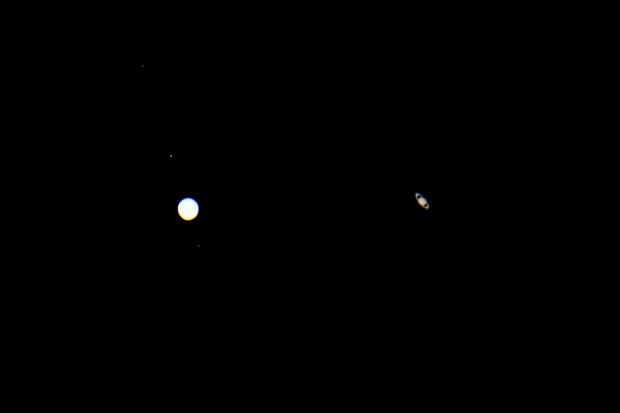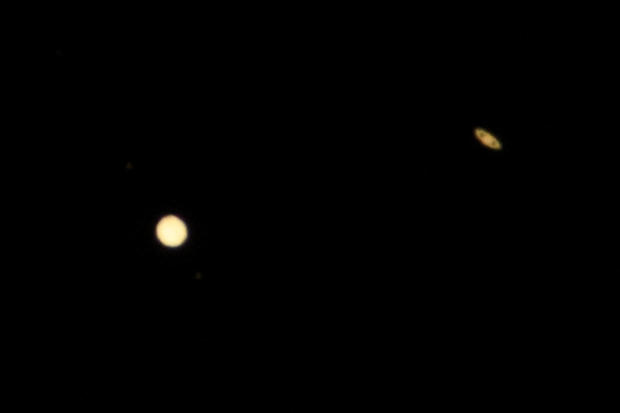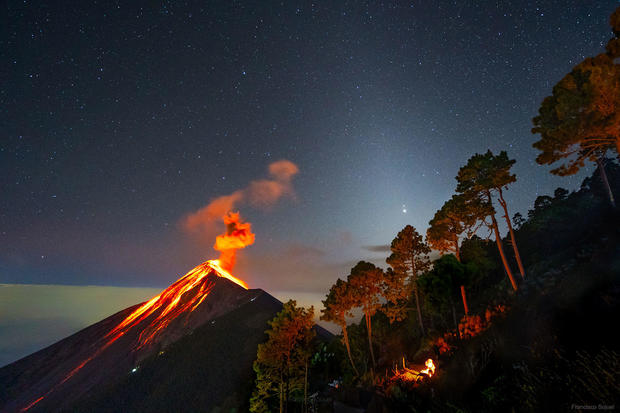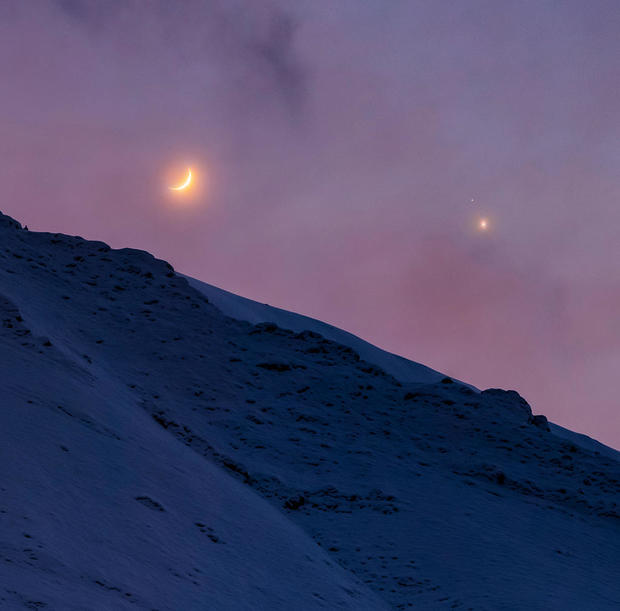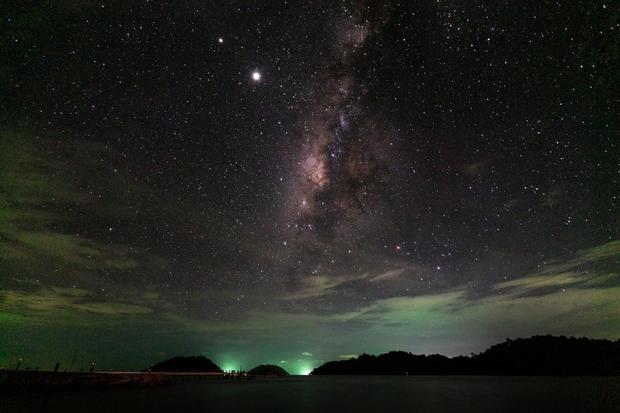
Jupiter and Saturn, the two largest planets in our solar system, were visibly closer together Monday night than they have been in 800 years – marking an extremely rare celestial event known as the ‘great combination. ”
The conjunction occurs when the orbits of the two planets align every 20 years, but the event is not always visible, and the planets usually do not get as close to each other as on December 21.
This time Jupiter and Saturn were only 0.1 degrees apart – less than the diameter of a full moon.
The planets were so close that, from some perspectives, they seemed to overlap completely, creating a rare “double planet” effect. However, while the planets appeared to be very, very close from Earth, in reality they are still hundreds of millions of miles apart.
The event happened to coincide with the winter solstice and the week of Christmas, but it can happen in any season.
If you missed the spectacle or if your sky seemed cloudy on Monday evening, don’t worry – the planets will still appear extremely close together in the night sky for the next few weeks and dedicated astrophotographers are sharing their best photos of the night on social media .
Santa Barbara, California
Rodin Eckenroth / Getty Images
Los Angeles, California
PATRICK T. FALLON / AFP via Getty Images
Melbourne, Australia
Guatemala
Francisco Sojuel / NASA Astronomy Picture of the Day
New York City, New York
Gary Hershorn / Getty Images
Texas
Alborz Mountains, Iran
Alireza Vafa / NASA Astronomy Picture of the Day
Koh Chang, Thailand
Chakarin Wattanamongkol / Getty Images
Brill, England
Jim Dyson / Getty Images
Colorado Springs, Colorado
Kuwait City, Kuwait
YASSER AL-ZAYYAT / AFP via Getty Images
How to view the great conjunction
The great conjunction shines brightly shortly after sunset, low in the southwestern sky as seen from the Northern Hemisphere, NASA said.
Throughout December and early January, skywatchers can easily see the two planets with the naked eye. They are so bright that they can even be seen from most cities.
Jupiter currently appears brighter than any star in the sky. Saturn is slightly fainter, but still as bright as the brightest stars, with a recognizable golden glow.
Saturn will appear slightly above and to the right of Jupiter and even appear as close to the planet as some of its own moons visible with binoculars or a telescope. Unlike stars, which twinkle, both planets will maintain a constant brightness, easily found on clear nights.
The event is observable anywhere on Earth, provided the sky is clear. It is easiest to see along the equator, and more and more difficult to see further north.
